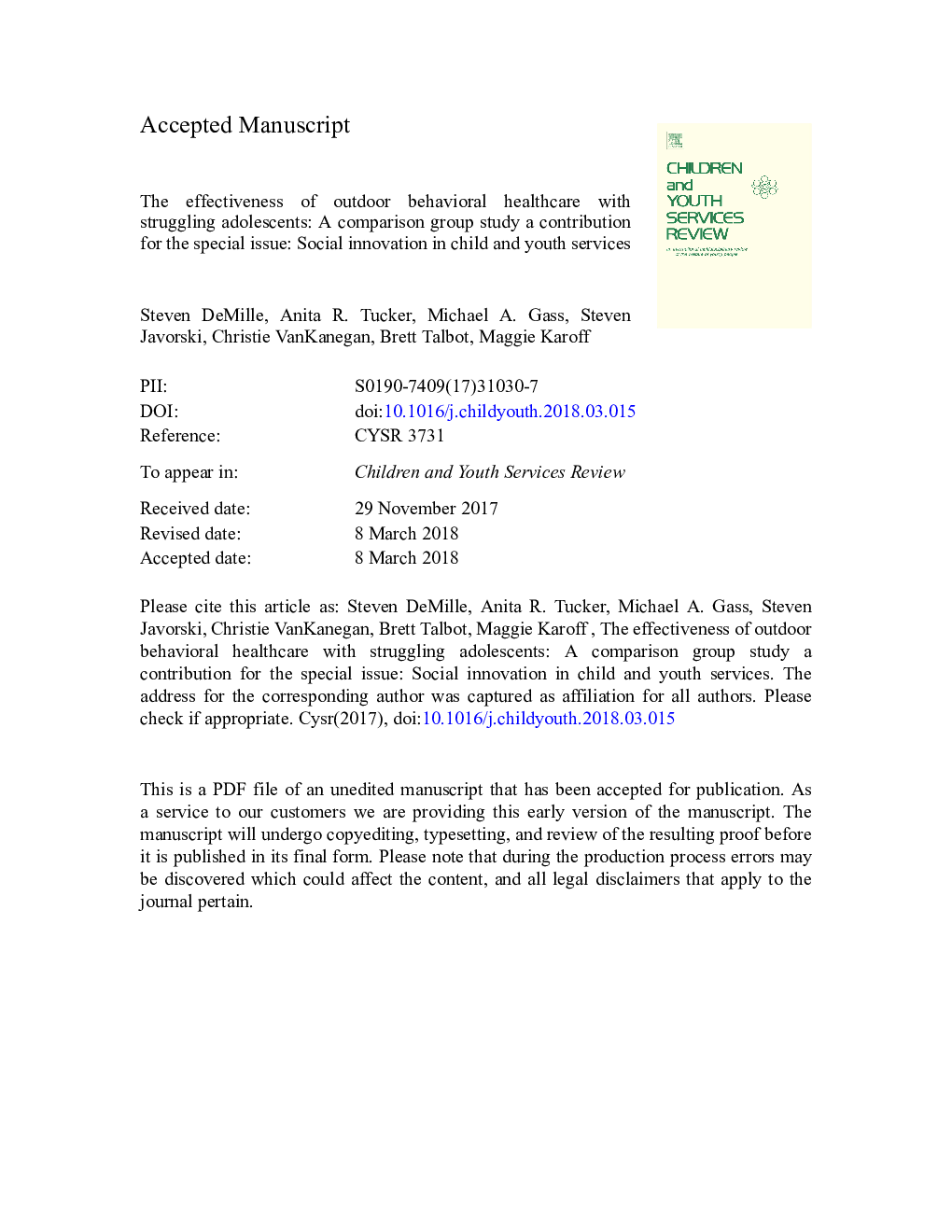| Article ID | Journal | Published Year | Pages | File Type |
|---|---|---|---|---|
| 6833181 | Children and Youth Services Review | 2018 | 37 Pages |
Abstract
This study examined the longitudinal impact of Outdoor Behavioral Healthcare on youth participants as reported by their parents. This analysis fills a critical gap in past research by including a Treatment as Usual (TAU) comparison group. Findings showed that youth participants who attended an Outdoor Behavioral Healthcare treatment program were, as reported by their parents, were functioning significantly better than the TAU group one year following the program as measured by the Youth Outcome Questionnaire 2.01. Youth who remained in their communities were still at acute levels of psychosocial dysfunction during the same time span. Despite some differences between the means of the treatment and TAU groups across time between gender and groups, a regression analysis revealed age and gender not to be significant predictors of improvement. The only significant predictor was participation in the treatment group.
Related Topics
Health Sciences
Medicine and Dentistry
Perinatology, Pediatrics and Child Health
Authors
Steven DeMille, Anita R. Tucker, Michael A. Gass, Steven Javorski, Christie VanKanegan, Brett Talbot, Maggie Karoff,
